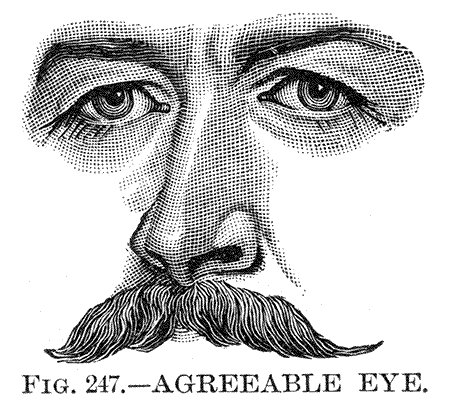May 2024
allerdings
1 May 2024, around 8.49.
…it’s a mistake to argue with a book that contains no arguments.
It took me longer than I like to admit to realize that the diversity of topics in most modern essay collections was driven not by the author’s personal interest, but by the crass casualty of editorial need. Excellent collections – excellent critics – can overcome this characteristic, but most critics are not excellent (indeed, it would impossible for them to be so, as the excellent few must have a larger company to excel). The disappointment I felt in reading Becca Rothfeld’s All Things Are Too Small was that of realizing the error of my own judgement: it is a perfectly decent collection of perfectly normal criticism.
I had enjoyed reading many of Rothfeld’s essays online. They seemed incisive, nuanced, and thoughtful. Somewhere in the transition from screen to page, from editorial hand to editorial hand, the essays seem to have lost their focus – or perhaps I lost my willingness to focus on them. 1 Certainly it did not help that I was not at all interested, in any real sense, in the materials they discussed; the greater problem for other readers may be that Rothfeld did not seem to be particularly interested, either, except in a transitory sort of way. 2 For a collection supposedly in praise of excess, the vision of the world presented was unaccountably small 3 – a glimpse of a running argument with some unstated opponent (probably simply ‘the Man’) that has the limited appeal of someone talking too loudly on a train in an attempt to demonstrate their own worth rather than edify (or persuade or entertain) their audience.
- E.g., the unsprightly essay ‘Only Mercy: Sex After Consent’ seemed the bloated decomposition of the more concentrated ‘Pleasure and Justice’.[↩]
- E.g., Perhaps the juxtaposition of Sally Rooney’s novels with Twilight is meant to be entertainingly shocking, and certainly there is something interesting that could be said about the popularity of such rather platitudinous wish fulfillment narratives – but Rothfeld doesn’t say it.[↩]
- This is the limit of promiscuity (of reading or watching movies or what have you) – it reduces the details of excess to a somewhat dreary sameness. Perhaps it is because I am not generally interested in authorial woundedness as such; blood, sweat, and tears (and other bodily fluids) are generally not called for, not least because they involve more housekeeping than I care to do.[↩]
moth-eaten notions
5 May 2024, around 4.35.

Minerva and Arachne, engraving by Johann Wilhelm Baur (1641)
…a garment becomes a real garment only in the act of being worn; a house where no one lives is in fact not a real house…
But truly, for mine own part, if I were as tedious as a king, I could find it in my heart to bestow it all of your worship.
At the guesthouse near the sea, there is a table in the library that is usually home to a jigsaw puzzle. The puzzle ends up being a communal project, with invisible hands piecing together fragments of a well-known eye, a bit of sneer, 2 or a mass of indistinguishable monsters until the puzzle’s done. It remains on the table for an hour or two, for all the puzzlers (and the puzzled) to see (curious that it matches the image on the box top), and then it is returned to the box, which is returned to the shelf, and the next puzzle is taken down, the edge pieces sorted to establish the empty space of the image and make room for a new beginning.
* * *
Wissen sie nichts; was braucht die Welt einen gelehrten Beweis davon? (p. 48)
They know nothing; why does the world need a learned demonstration of it? (p. 167)
A problem I encountered in the writings of Adam Smith is that (a) they assume a rational system and (b) they assume rational actors. It needs no economist come from the far side of the grave to sense that markets (and their actors) are not entirely rational and that these are, therefore, rather large assumptions. These assumptions are also entirely of their period, that time of enlightened, hopeful reasonableness (and the concomitant barbarities of near constant warfare and banditry): there is of course the irony that one is rarely so concerned with reason as when one is being most unreasonable. It is this irony, I think, that Hamann is keen to account for in his Socratic Memorabilia, hence his concern with historiography, critical forms (and forms of criticism), and the character of Socrates, the daimon-plagued mouche on dame philosophy’s visage. 3
The peculiarities (some would say the charms) of Hamann’s style call for, even if they do not necessarily reward, attempts at close reading. This is curious. It is tempting to think that untangling the clews of his style is the only thing that would help the reader traverse the labyrinthine confines of his meaning, but what he is saying seems to be fairly clear. 4 I like how Beiser (who may relish the juicer ὄψον of gossip, 5 but at least serves it with the heartier fare of clear of thinking and states bluntly what I would be content to dimly intuit) summarizes it neatly in The Fate of Reason, namely that ‘it would be irrational to universalize the principle of sufficient reason since this would ask for reasons in cases where none can be given. […] The whole point of Hamann’s argument is indeed that faith is neither rational nor irrational since reason cannot either prove or disprove it’ (pp. 28f.). Strange substance for a ratiocinating merchant or a stargazing philosopher or a modern reader. 6 One must wonder, then, is it worth compounding the bitter pill of the surgeon’s son, to find it made of mummy powder and mandrake root, wrapped in cobweb, to be taken with a tincture for the truly cross?
* * *
Wie Sokrates auf diese Neuerung gekommen; ob es eine Eingebung seines Genius, oder eine Eitelkeit seine Arbeiten zu unterscheiden, oder die Einfalt einer natürlichen Schaamhaftigkeit gewesen, die einem andächtigen Athenienser wunderlich vorkommen muste; weiß ich nicht. (p. 31)
How Socrates arrived at this innovation—whether it was an inspiration of his genius or a bit of vanity designed to make his works distinctive or the simplicity of a natural modesty, which must have appeared odd to a pious Athenian—I do not know. (p. 155)
Le goût du merveilleux enfante les systèmes
A taste for marvels engenders systems
Hamann’s Socratic Memorabilia is not, it seems, closely linked to Xenophon’s. According to O’Flaherty, who cites Blanke, Hamann had not read Plato or Xenophon before writing his essay. O’Flaherty isn’t interested in the details (odd for a commentary that exceeds its subject text) and I haven’t time to chase down references from which I would probably draw a blank. Assume, then, that he had not read them (big assumption if he had any Greek at all, but I will grant it, it costs me nothing). Why Socrates? Why, in particular, a Socrates that is as much artisan and sculptor as instructor or philosopher?
It’s tempting to go with the uneasy comparison to Christ, the carpenter (or the two guys named Simon who worked with leather, one in Athens and one in Joppa 7) but Hamann seems just as readily to be making light of those who would draw these tenuous connections as to be making them himself: Wenn sie in Ernst an Sokrates glauben; so sind seine Sprüche Zeugnisse wieder sie [If they seriously believe in Socrates, then his own sayings are witnesses against them] (SD, p. 32/p. 155). The use of ‘believe’ here is worth noting, tweaking the nose of the rational historian who would swallow complacently the evidence of Pausanias, written some six centuries after the fact: 8 ‘Right at the very entrance to the Acropolis are a Hermes (called Hermes of the Gateway) and figures of the Graces, which tradition says were sculpted by Socrates, the son of Sophroniscus, who the Pythia testified was the wisest of men, a title she refused to Anacharsis, although he desired it and came to Delphi to win it’. 9 Airs and graces can only withstand so long the blows of a modern Alcibiades kicking against the pricks. 10 Socrates’s own words, those witnesses against the believers in his afterlife – well, they are only so much air and have long since vanished.
How do we test the merits of a sculptor? asked Socrates. Not by inferences drawn from the talk of the artist merely. No, we look to what he has already achieved. These former statues of his were nobly executed, and we trust he will do equally well with the rest.
* * *
…durch ihre Vorsorge entgehen die Einfälle des Armen den Motten länger als blanke Kleider und rauschende Schlafröcke, als die Hypothesen und Formeln der Kalender-System- und Projektmacher der Stern- und Staatsseher. (p. 44f)
…through her providence the poor man’s ideas escape the moths longer than the fine clothes and rustling banyans, longer than the hypotheses and formulas of the horoscope-system- and project-makers among the astronomers and court astrologers. (p. 161)
Fortune favors the bold, it is said, or the foolish, but this is the explanation of the parsimonious, who cannot afford to cut ideas from whole cloth, but must rummage in the ragbag of history to eke out a place – a page of shreds and patches. Hamann was too well aware of what travailler pour le roi de Prusse meant, 13 and silken lines and woolly fustian are no boon to the ragpicker’s bag, whither scraps of linen that trickled down to the backs of the many, once threadbare, play the foolscap, a sublime transformation whether your preferred Longinus bears a stylus or a spear. 14 It is naturally difficult to put the noumenon 15 next to the numinous, not least because one seems unserious – one word aslant, one cross allusion, and before you know it, Rameau’s your uncle. 16 And one is left with the question of what is memorable and what is worth thinking about, something of a parlor game for idle thinkers. One may perhaps be forgiven for believing, in good faith, that the game might not be worth the stake. 17
- Cf. Sokratische Denkwürdigkeiten (SD) title page/p. 137[↩]
- Cf. SD, p. 19/p. 145[↩]
- Cf. SD, p. 33/p. 155[↩]
- In a way he seems Sternean, but whereas Sterne strings the reader along, Hamann wants to the tie the reader up in knots.[↩]
- Cf. Xenophon, Mem. 3.14.2ff.[↩]
- I.e., Berens, Kant, and the public, the three dedicatees of the piece.[↩]
- Cf. SD, p. 27/p. 151[↩]
- To offer the spurious coin of analogy, the forged banknote engraved by Adam Smith, economist, would be more interesting to the historian and the dilettanti than that engraved by Adam Smith, engraver.[↩]
- Pausanias 1.22.8: κατὰ δὲ τὴν ἔσοδον αὐτὴν ἤδη τὴν ἐς ἀκρόπολιν Ἑρμῆν ὃν Προπύλαιον ὀνομάζουσι καὶ Χάριτας Σωκράτην ποιῆσαι τὸν Σωφρονίσκου λέγουσιν, ᾧ σοφῷ γενέσθαι μάλιστα ἀνθρώπων ἐστὶν ἡ Πυθία μάρτυς, ὃ μηδὲ Ἀνάχαρσιν ἐθέλοντα ὅμως καὶ δι᾽ αὐτὸ ἐς Δελφοὺς ἀφικόμενον προσεῖπεν, trans. W.H.S. Jones.[↩]
- Xenophon’s Mem. includes quasi-defenses of Socrates’s role in the lives of Alcibiades and Critias; Beiser suggests (p. 23) that, in a letter to Kant, Hamann presents Berens as ‘Alcibiades’ while Kant was Socrates and Hamann his daimonion, but, one could just as well note (if one did not mind being anachronistic and, really, who does?) that Kant is one of the ‘thirty’ Western philosophers one is likely to be wrangled into reading, which could suggest a different view of the matter. But it is only a suggestion.[↩]
- τοὺς μὲν ἀνδριαντοποιούς, ἔφη, δοκιμάζομεν οὐ τοῖς λόγοις αὐτῶν τεκμαιρόμενοι, ἀλλ᾽ ὃν ἂν ὁρῶμεν τοὺς πρόσθεν ἀνδριάντας καλῶς εἰργασμένον, τούτῳ πιστεύομεν καὶ τοὺς λοιποὺς εὖ ποιήσειν, trans. more or less E.C. Marchant.[↩]
- O’Flaherty’s note on this passage is quite illuminating.[↩]
- A phrase I learnt from Marx.[↩]
- For more lucid detail on this, see Heidi Craig, ‘English Rag-women and Early Modern Paper Production’ in Valerie Wayne, ed., Women’s Labour and the History of the Book in Early Modern England (London: Bloomsbury, 2020). [↩]
- Cf. Eph. 4:24[↩]
- Hamann would probably be tickled, though, to have become a footnote to Immanuel and the churchyard.[↩]
- Cf. SD, p. 45ff./p. 165[↩]
dreamscapes
14 May 2024, around 8.55.

I welke ay forth in wely wyse,
No bonk so byg þat did me dereȝ.
Þe fyrre in þe fryth þe feier con ryse,
Þe playn, þe plontteȝ, þe spyse, þe pereȝ;
& raweȝ & randeȝ & rych reuereȝ,
As fyldor fyn her bonkes brent.
I wan to a water by schore þat schereȝ—
Lorde! dere watȝ hit adubbement!The dubbemente of þo derworth depe
Wern bonkeȝ bene of beryl bryȝt;
Swangeande swete þe water con swepe
Wyth a rownande rourde raykande aryȝt.
a critical perspective
20 May 2024, around 7.26.
The forger, in sum, treats his reader as a flight simulator treats a pilot; he offers a vivid image of the specific text and situation that he seeks to represent, but only a vague and obviously unreal one of their periphery. Like the pilot in training, the reader in question is mesmerized by the deliberately projected, scrupulously detailed image at the center of his gaze, and the illusion works. Once he steps back and contests it, its vague areas and false perspectives emerge with dramatic starkness and surprising ease. Simulation is not reality, after all—though its emotional and physical effects can be wrenching enough when its victim wears the proper blinders.
the frond
22 May 2024, around 10.33.

Words are the living carriers of feeling – only pedants and scholars dilute them with analysis or kill them with devitalising formulae. A word is the stamp of life – the richer the better.
beside oneself
25 May 2024, around 4.33.
Ecstatic experiences bring perception of perfection, not of hitherto unnoticed incongruity. Ecstatics find delight in proportion and harmony, not humour in what is awry. Nothing humorous is ever a trigger to ecstasy. In ecstasy there is no fun whatsoever.
When I put Marghanita Laski’s Ecstasy in Secular and Religious Experiences on hold at the library, I knew very little about her save that she wrote the egregiously creepy novella The Victorian Chaise-Longue, 1 but in addition to her fiction, Laski was also a ‘lexicographical irregular’ for the supplement to the OED and a key player in the inclusion of more quotations from women and non-literary sources, 2 as well as a book critic, among other occupations. 3 Ecstasy seemed a bit of a step sideways, although as with most passion projects, it really wasn’t.
That it was a passion project is instantly clear from its style and bulk. According to the introduction, Laski undertook the study described in Ecstasy because she was not satisfied that the (possible) time slip (?) occasioned by ‘an experience I believed was known as ecstasy’ in The Victorian Chaise-Longue ‘should be accepted within the bounds of even fictional possibility’ (p. 1). 4 From this starting point, Ecstasy examines its topic along the model of Varieties of Religous Experience, although it goes one better in its anatomizing by including an informal questionnaire survey of sixty-three of Laski’s associates (I use the term with all the vagueness one could hope) 5 in addition to small corpora of literary and religious texts describing ‘ecstatic’ experiences. Of course, as Laski selected the texts based on her sense of what ‘ecstasy’ means, the resulting definitions are perhaps biased, but one does not necessarily borrow a book with the title Ecstasy in Secular and Religious Experiences published in 1961 with high expectations of methodological rigor. 6 It also owes a good deal to Evelyn Underhill’s Mysticism, which focuses more particularly on religious ecstasy, and there is always the sense, when the footnotes crop up, that Laski rather resents this fact. On the whole, Ecstasy is reasonable, decently researched, well argued, and, for the general reader, not particularly useful. 7
It is not useful because it does not illuminate the types of experiences it is discussing; that is, one could attempt to apply Laski’s criteria to texts not in the corpus and she would probably disagree with the assessment. Lumping big feelings together and categorizing them as up, down, and sidewise (pardon the hyperbole) while saying that this is and that isn’t ‘ecstasy’ based on criteria that seem opaque to someone who can’t get into the spirit of the thing (viz., me) is, well, a bit silly. It is silly in part because ‘ecstasy’ as it is (I think) commonly understood – that is, ‘The state of being “beside oneself,” thrown into a frenzy or a stupor, with anxiety, astonishment, fear, or passion’ (per the OED) does not satisfy as the subject the book, which seems rather to be about where ideas and feelings come from.
Rather than examining ‘ecstatic’ feelings, it seems to be inching towards an answer, in a rather roundabout way, to the perennial question of author readings: ‘…but where do you get your ideas?’ It is also, more interestingly, trying to answer (again, obliquely), why are certain things, certain ‘triggers’ moving to a greater or lesser extent than others. 8 These questions (in this form) seem fairly unanswerable, in that any satisfying (or plausible) answer to them is likely to change over time or in different circumstances, although they remain bones well worth gnawing. I think Laski put it best in a review of several works of criticism on children’s books: 9
If we rely on the ecstatic response as a source of good, we are relying on a very feeble reed. The best we can say for it is that it sometimes works, and that perhaps it works best (here is my own moral decision) when it sets off creative pattern-making that need have nothing whatsoever to do with the nature, moral or otherwise, of the trigger; and I should like to think that it is for this response that the state gives money to the arts.
But let us suppose, for the moment, that art in fiction does work, does do all that the morally-committed critics, from Leavis to these here, hope for it. Let us suppose that we can identify and agree, more or less, on what fiction is of artistic worth. To confine ourselves to this only, whether we are adults or children, is, if we are addicted readers, impracticable.
- It evokes a claustrophobia similar to that summoned up by George Eliot’s ‘The Lifted Veil’, which one could with some honesty (but a great deal of unfairness) describe as an unholy mash-up of William Dean Howells and The Twilight Saga crammed into twenty-five pages (I mean, of course, its depiction of depressive symptoms).[↩]
- Cf. Her caustic assessment of marketing copy (PDF version). This also led me to an article on why ‘large historical dictionaries give so much pleasure to their owners and users’ (PDF) from the Proceedings of the European Association for Lexicography, which was very sweet but not actually relevant; it was too good not to share, though.[↩]
- Her assessment of Georgette Heyer (PDF) apparently sparked an outcry, though it seems perfectly reasonable and rather tame for a hatchet job.[↩]
- For those unfamiliar with Laski’s novella, it is well worth reading; it has a stickiness to it, a gelatinous quality, that unsettles and perturbs the main character (and the reader). Whether the experience is one of ‘ecstasy’ as commonly understood, however, is not clear – even after reading Ecstasy, although one of the ‘literary’ examples Laski cites (L9, a passage quoted from Jung), captures a similar atmosphere.[↩]
- The description of the survey method is a charming example of a certain sort of social science writing, before the field was reduced to a perpetual advertisement for SPSS software.[↩]
- ‘I may accept, for my purposes, what people believed themselves to have felt as evidence of their feelings; it is not possible to get behind sincere reports of feelings to “true feelings”’ (p. 124).[↩]
- Others may find her categories of withdrawal and intensity ecstasies to be psychologically acute, and Laski did publish a follow-up/abridgment aimed at a broader audience.[↩]
- Laski’s atheism is probably also important to the ambivalence of the book. Perhaps it comes of reading too much (into) Hamann lately, but rational approaches to irrational experiences seems a dodgy proposition; one cannot argue with a zealot about the object of their zealotry.[↩]
- I would, I think, like to read a collection of Laski’s book reviews and criticism, although I am too lazy to try to find them in the original publications.[↩]
Adversaria (14)
31 May 2024, around 4.18.
‘One can only accept the answers one needs’ —Marghanita Laski (Ecstasy in Secular and Religious Experiences, p. 1)
‘Phrases of neatness, cosiness, and comfort can never be an answer to the sphinx’s riddle’ —William James (Varieties of Religious Experience, p. 364)
‘There is something ghostly, in this history where questions disappear, and answers survive’ —Franco Moretti (The Bourgeois, p. 14)
‘What Kant’s pen could not do, the guillotine did for him’ —Frederick C. Beiser (The Fate of Reason, p. 198)
‘In the lesser poets, and in the greater poets, too, at times when inspiration is not equal to the effort, the result is, all too often, loss of vitality, tastelessness, and lack of precision’ —E.V. Gordon (introduction to The Pearl, p. xxxvii)
‘I suggest that some part of the honorific superiority of horses over cows may be due to the fact that one cannot ride to ecstasy on a cow’ —Marghanita Laski (contra Veblen, in Ecstasy in Secular and Religious Experiences, p. 198f., n.5)
‘Although he did not possess any great philosophical talent, Eberhard did have one indisputable skill: he knew how to give an academic dispute the added air of scandal’ —Frederick C. Beiser (The Fate of Reason, p. 219)
Capital posits the permanence of value (to a certain degree) by incarnating itself in fleeting commodities and taking on their form, but at the same time changing them just as constantly; alternates between its eternal form as money and its passing form in commodities; permanence is posited as the only thing it can be, a passing passage – process – life.
